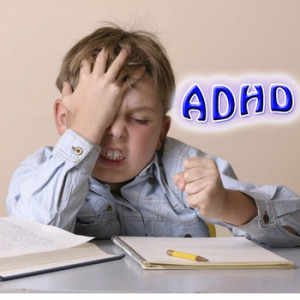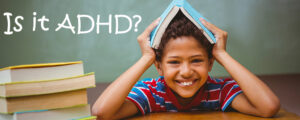
How Do You know Your Child has ADHD?
ADHD, a brain-based disorder, beginning in childhood. While many adults do get diagnosed with ADHD, in most cases it is diagnosed in elementary school-aged children.
The main three symptoms to look out for in ADHD include
- inattention- trouble focusing
- hyperactivity- constant movement, fidgeting, and restlessness
- impulsiveness- not thinking before acting and making decisions
In a child, this would look like the student who has trouble following along with the lesson, sitting still in his or her chair and who seems to always be calling out. Children are typically diagnosed with ADHD around the age of seven.
Signs of ADHD parents and teachers should look out for:
1) Children who cannot sustain attention in a conversation! These children always seem to be looking away when someone else talks or going off the topic at hand when it is their turn to speak
2) Children who are always losing their belongings. Their hats, gloves, books… you name it! If this is excessive, it could be a sign of ADHD.
3) Children who talk too much to the point where they seem to be on a motor. This can refer to the child in class who constantly blurts out the answers or irrelevant statements.
4) Children who struggle academically. This may be due to their trouble attending and processing information. If their ADHD symptoms are treated, they will better be able to receive good grades and keep up with the material. Also, often times ADHD is co-morbid with learning disorders as well.

Preschool-aged children with ADHD symptoms
In younger children especially, symptoms of intention, hyperactivity and impulsiveness can appear age appropriate. Many five-year-olds may have trouble paying attention in a classroom setting due to their age rather than due to ADHD.
A challenge arises for parents and teachers to differentiate between age-appropriate behavior and ADHD like symptoms. As children get older and go to elementary school it becomes easier to determine by both teachers and parents if they have ADHD.

What behaviors parents and teachers should look out for in preschoolers:
- Look out for the hyperactive child! In preschool-aged children, hyperactivity is the most predominant ADHD symptom to look for. For example, the child who is constantly bouncing up and down in his or her chair, running around the room and moving his or her body non-stop.
- Children who exhibit ‘self-focused behavior’. This means the children who cannot recognize other people’s wants and needs. This child may have trouble taking turns with board games and toys
- The child who cannot finish the puzzle, coloring in a picture or even finish his or her own sentence
- The children who exhibit disobedient and reckless behavior. Compared to other preschoolers, preschoolers who have ADHD are more likely to get suspended from daycare or school.
- The children who have trouble learning simple lessons and concepts. Many children with ADHD are placed in special education programs in preschool due to their difficulty grasping lessons.
It is important for parents and teachers to work together to determine if a child needs to be evaluated with ADHD. Many times, because certain behaviors are characterized as age-appropriate, ADHD will not be diagnosed until elementary school. However, it can be extremely beneficial to intervene at the start of ADHD and begin treatment rather than wait a few extra years.
Impairments in two or more settings
When diagnosing children, especially younger ones, with ADHD, it is important to see if their behaviors are occurring in more than one setting. For example, preschool children who have trouble behaving and focusing at school but experience no impairments in the home may have a learning disorder or another issue.
It is important for parents and teachers to communicate with each other and to see if these same behaviors are occurring in both environments. If a child struggles with fidgeting, forgetting things and listening to instructions in both school and home settings, it can be beneficial to get an ADHD evaluation.

Children who experience ADHD (primarily inattentive subtype):
- Daydream constantly! They are always spacing out quietly into the distance.
- Do not follow through with instructions. If you give a three-step direction, they may stop after the second direction.
- Struggle with remembering to complete tasks and put things away.
- They are often coined as spacey and inattentive by teachers.
It is important for parents and teacher to recognize that it is not only the hyperactive loud children who are at risk for experiencing ADHD. ADHD can be primarily inattentive, meaning that these children have difficulty focusing but are not causing disruptions. These children may be struggling academically but they are not misbehaving and causing outbursts at school or in the home setting. However, because they do not fit the stereotype of the loud fidgeting child, their symptoms can be overlooked.
Many times, in preschool and elementary schools, girls can be experiencing ADHD with a primary inattentive subtype, but they are not being evaluated for ADHD. It is important for parents and teachers to understand that the children who are spacey and ‘in their own worlds’ can be experiencing ADHD as well.
Don’t wait until it is too late!
There are many signs of ADHD to look out for to determine if your child potentially has ADHD. If you notice any of them, bring your child in to get evaluated.With early intervention, Children with ADHD, do well in school, socially and in other settings. It is important to ensure that they receive the resources they need to thrive like their fellow peers.

